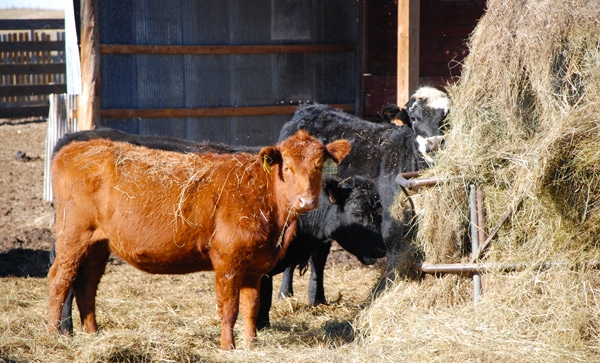
It’s estimated that winter feed makes up more than half of the annual cost of keeping a beef cow in some regions of the country. That being the case, maximizing the feeding value and minimizing the waste in harvested feed are important considerations.
For starters, hay stored outside usually has more spoilage during storage and lower palatability than hay stored inside, says Robert Kallenbach, University of Missouri Extension agronomist. And that presents further challenges in feeding.
“Cattle will waste a greater percentage of poor-quality hay than they will of good-quality hay. Animals fed high-quality hay early in the season will often refuse poor-quality hay when it is offered later,” Kallenbach says.
Research conducted at the University of Tennessee (UT) a few years ago studied hay losses in storage. The research compared different methods of storing large round bales of grass hay.
The hay was cut and baled in June in Moore County, TN. The bales were weighed at the time of harvest and storage, then weighed again the following January at the time of winter feeding.
Different storage methods were used and testing indicated the level of feed quality losses using each. Here’s how various storage methods of large round bales fared in the UT research:
Stored on the ground with no cover, 37% loss.
Stored on tires with no cover, 29% loss.
Stored on the ground and covered, 29% loss.
Stored on tires and covered, 8% loss.
Net wrapped and on the ground, 19% loss.
Stored in the barn, 6% loss.
The research shows that losses can be significant depending on the type of storage used. The data also suggest that storage losses occur from moisture getting into both the top, and bottom of the bales. Thus, if hay can't be stored inside a barn, the next best option is to at least get the hay off the ground and under a tarp or plastic cover. Raymond L. Huhnke, Oklahoma State University Extension agricultural engineer provides more information on large round bale storage here.
Kallenbach says more than 50% of harvested hay is wasted by either poor storage methods, improper feeding practices, or both.
He suggests the following steps:
Feed hay in small amounts or in a feeder to minimize waste. When fed a limited amount of hay at a time, cattle have less opportunity to trample and soil the hay. Feeding hay in a rack or a "hay ring" also limits the opportunity that animals have to trample or soil hay, and will reduce waste substantially if you intend to provide more than a day's worth of hay at one time.
Feed hay in well-drained areas.
If you intend to feed hay in a single location all winter, provide a footing such as crushed gravel or concrete to help minimize mud. Perhaps more cost effective is to move hay-feeding areas around the farm to minimize the damage to any one area of the pasture.
Feed hay stored outside before hay stored inside.
Kallenbach offers a wealth of additional hay-feeding tips here.
What special tricks do you use to minimize hay waste and stretch your winter feed supplies? Leave your comments below.
You might also like:
3 Lessons From A Greenpeace Dropout
More Consumers Are Realizing The Dishonesty Of The Animal Rights Industry
About the Author(s)
You May Also Like


.png?width=300&auto=webp&quality=80&disable=upscale)

.png?width=300&auto=webp&quality=80&disable=upscale)
